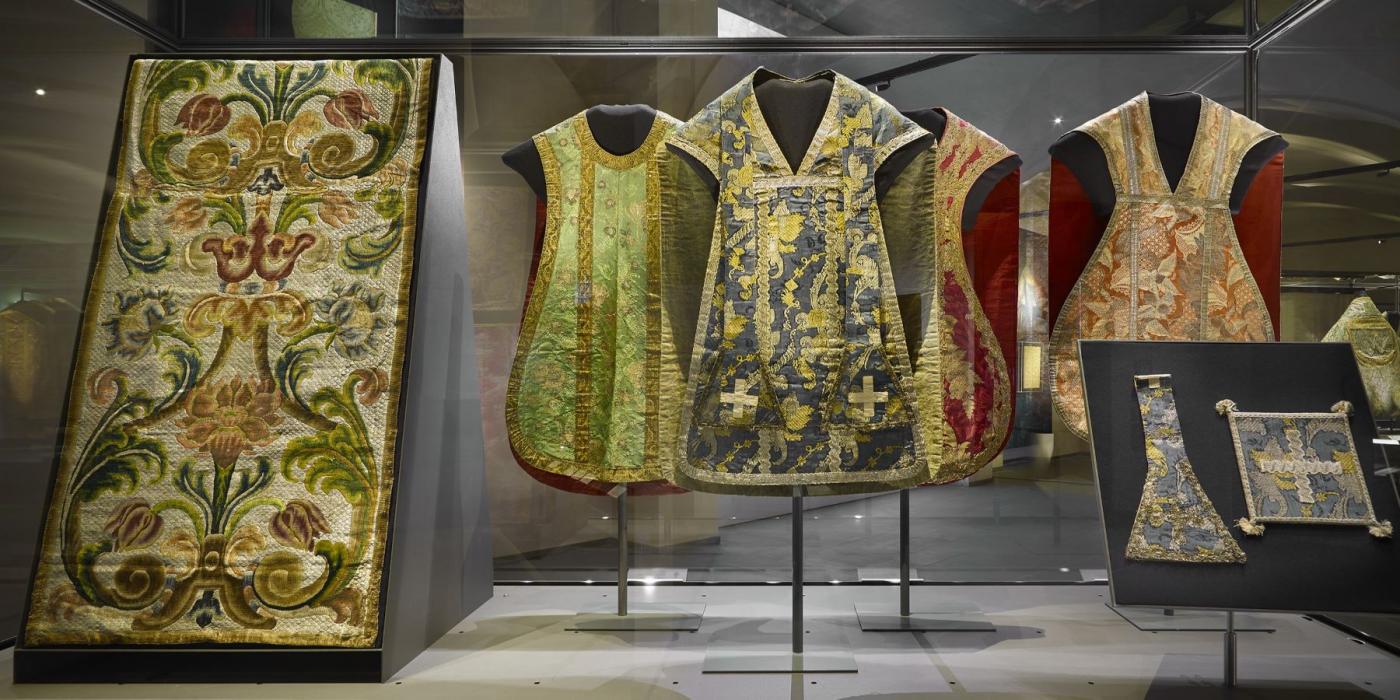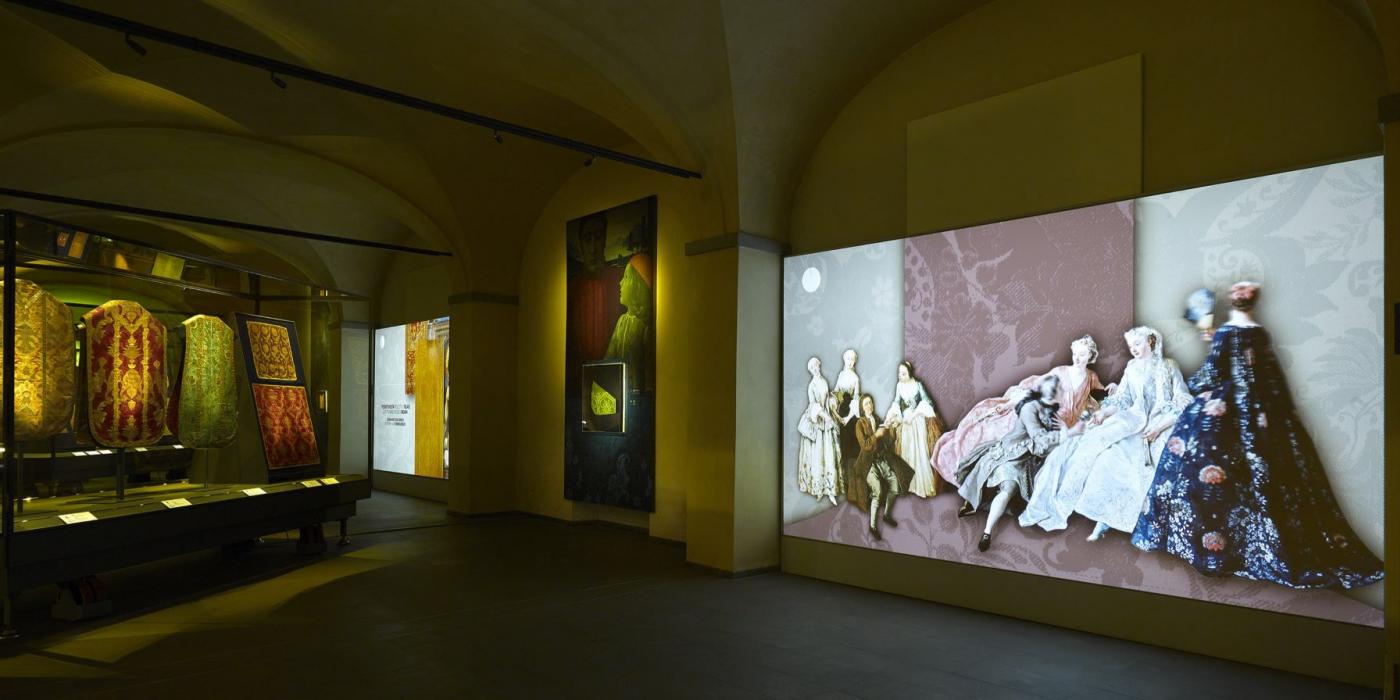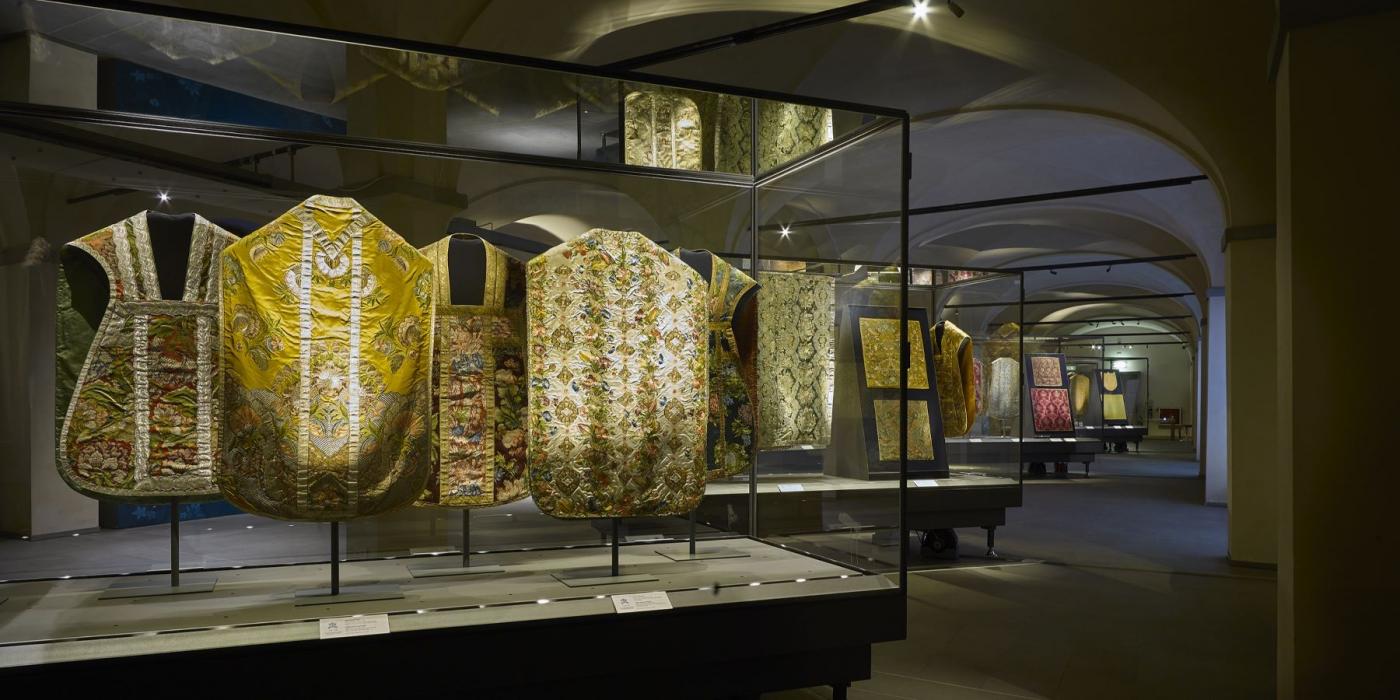Silk Treasures. Textile masterpieces from the Falletti donation
The exhibition, which celebrates the first 50 years of the Textile Museum, allows you to admire the generous donation of the collection by the Florentine doctor Giovanni Falletti, an eclectic collector, who preserved and collected textile artefacts, books, prints, jewellery, masks, etc. from Europe and many Asian and African countries.
On display are around 2,000 very heterogeneous objects, including artefacts of incredible historical, artistic and anthropological value such as: 250 Japanese prints from the second half of the eighteenth and nineteenth centuries by artists such as Hokusai, Hiroshige, Kuniyoshi, Utamaro; fabrics from European manufactures from the fifteenth to the eighteenth century; over 450 lithographs, etchings, woodcuts and prints from the sixteenth to the nineteenth century - including Dürer, Van Leyden, Salvator Rosa, Piranesi, Max Klinger, Lorenzo Viani; more than 1,000 objects including embroidery, ornamental bands, panels, masks, jewellery, ritual weapons from Africa, Central Asia, Eastern Asia, South America.
Set up in the room dedicated to historical fabrics, the exhibition develops in a chronological itinerary that crosses four centuries of great textile manufacturing and which crosses styles, productions, materials and subjects, from the fifteenth century to the end of the eighteenth century.
Used for the making of very sumptuous clothes for the aristocracies of the time, these fabrics,
due to their enormous value and value, were subsequently donated to religious institutions which reused them to create sacred vestments such as chasubles, dalmatics and copes.
The visit experience is enriched by the presence of two multimedia devices that tell the story of the fabric manufacturing process and the development of silk art up to the pre-industrial period. Digital microscopes allow you to closely observe the internal structure and complexity of the weaves of velvet, damask, brocade and lampas (fabric silk). Finally, graphic reproductions placed alongside the fabrics illustrate the development of the main decorative motifs adopted by the workshops between the 15th and 18th centuries.
On display are around 2,000 very heterogeneous objects, including artefacts of incredible historical, artistic and anthropological value such as: 250 Japanese prints from the second half of the eighteenth and nineteenth centuries by artists such as Hokusai, Hiroshige, Kuniyoshi, Utamaro; fabrics from European manufactures from the fifteenth to the eighteenth century; over 450 lithographs, etchings, woodcuts and prints from the sixteenth to the nineteenth century - including Dürer, Van Leyden, Salvator Rosa, Piranesi, Max Klinger, Lorenzo Viani; more than 1,000 objects including embroidery, ornamental bands, panels, masks, jewellery, ritual weapons from Africa, Central Asia, Eastern Asia, South America.
Set up in the room dedicated to historical fabrics, the exhibition develops in a chronological itinerary that crosses four centuries of great textile manufacturing and which crosses styles, productions, materials and subjects, from the fifteenth century to the end of the eighteenth century.
Used for the making of very sumptuous clothes for the aristocracies of the time, these fabrics,
due to their enormous value and value, were subsequently donated to religious institutions which reused them to create sacred vestments such as chasubles, dalmatics and copes.
The visit experience is enriched by the presence of two multimedia devices that tell the story of the fabric manufacturing process and the development of silk art up to the pre-industrial period. Digital microscopes allow you to closely observe the internal structure and complexity of the weaves of velvet, damask, brocade and lampas (fabric silk). Finally, graphic reproductions placed alongside the fabrics illustrate the development of the main decorative motifs adopted by the workshops between the 15th and 18th centuries.
Access notes:
cCosed on Christmas Day.
On other holidays, extended opening hours are possible. Please consult the museum website.
On other holidays, extended opening hours are possible. Please consult the museum website.
Photo gallery


